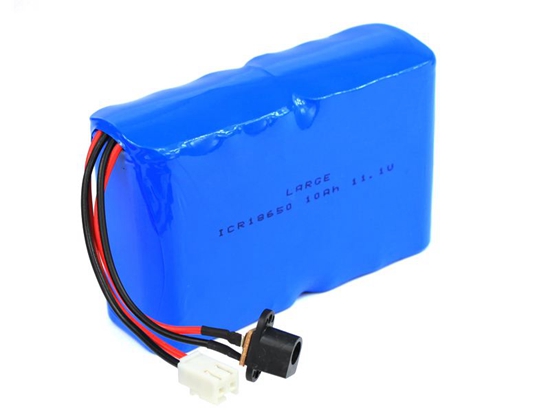Classification of graphite li-ion battery anode: natural graphite and artificial graphite
Lithium-ion batteries have many advantages such as high voltage, high energy, long cycle life, and no memory effect. They have been widely used in consumer electronics, electric tools, and medical electronics.

It has been gradually promoted in the transportation fields of pure electric vehicles, hybrid vehicles, electric bicycles, rail transit, aerospace, and ships. At the same time, lithium-ion batteries have also shown good performance in large-scale renewable energy access, power grid peaking and frequency modulation, distributed energy storage, household energy storage, data center backup power, communication base stations, industrial energy conservation, green buildings and other energy fields and application prospects.
Anode material is one of the key factors determining the performance of lithium-ion batteries. At present, the anode materials used in commercial lithium-ion batteries mainly include:
1、graphite-based carbon materials, which are classified into natural graphite (NG) and artificial graphite (AG, artificial). Graphite);
2、disordered (disordered, amorphous) carbon materials, including hard carbon (HC, hard carbon) and soft carbon (SC, soft carbon);
3、lithium titanate material (LTO, Li4Ti5O12);
4、silicon Materials are mainly divided into carbon-coated oxy-silicon composites (C@SiOx), nano-silicon-carbon composites (C@nano-Si), and amorphous silicon alloys (a-SiMx).
We will mainly introduces the classification of graphite as a negative electrode material for lithium ion batteries.Natural graphite has two layers of crystal structure, hexagonal and rhomboid, and has the advantages of large reserves, low cost, safety and non-toxicity.
In the lithium-ion battery, the outer surface of the natural graphite powder has a non-uniform reaction activity and a large grain size. The surface crystal structure is easily destroyed during charging and discharging, and the surface SEI film is unevenly covered, resulting in low initial coulombic efficiency and shortcomings such as poor rate performance.
In order to solve these problems, natural graphite can be modified by particle spheroidization, surface oxidation, surface fluorination, surface-coated soft carbon, hard carbon materials, and other methods of surface modification and microstructure adjustment.From the comprehensive consideration of cost and performance, the current industrial graphite modification is mainly treated by a carbon coating process.Commercially applied modified natural graphite has a specific capacity of 340-370 mA·h/g, coulombic efficiency of 90% to 93% in the first week, and 100% DOD cycle life can reach more than 1000 times, which can basically meet the needs of consumer electronics. Battery performance requirements.

Artificial graphite is obtained by high-temperature graphitization of coke materials such as petroleum coke, needle coke, pitch coke, and metallurgical coke. Some products are also surface-modified, which has many similar advantages to natural graphite.

At present, the commercial graphite has a specific capacity of 310-370 mA·h/g, and the first week efficiency can reach 93%-96%, and the 100% DOD cycle life can reach 1500 times.Since the graphite grains in the artificial graphite are small, the degree of graphitization is slightly lower, and the degree of crystal orientation is small, it is better than natural graphite in terms of rate performance, volume expansion, and prevention of electrode rebound.
The prototype of the MCMB was a number of optically anisotropic small spheres discovered by researchers in the study of coal coking bitumens in the 1960s.In 1973, HONDA et al. prepared micron-sized spherical carbon materials from mesophase pitch, which were namedmesocarbon microspheres.
Since the outer surface of the particle of MCMB is the edge surface of the graphite structure, the reaction activity is uniform, and it is easy to form a stable SEI film, which is more conducive to the insertion and ejection of Li. Therefore, MCMB has the advantages of high efficiency in the first week and excellent rate performance, but it also has high production costs.
At present, the commercial use of MCMB has a capacity of 280-340 mA·h/g, the efficiency of the first week can reach 94%, and the 100% DOD cycle life can reach 1000 times, which can also meet the needs of consumer electronics.
However, due to the difficulty in simplifying the preparation process and the low yield, there is no obvious advantage in terms of circulation compared to artificial graphite, and the current market share of the consumer electronics is fading. Comparing modified natural graphite, artificial graphite, and MCMB, the comprehensive performance of artificial graphite is the best, and it accounts for a relatively high proportion in the high-end electronic products market. Modified natural graphite is relatively low in cost and has been widely used in power batteries, energy storage batteries, and consumer electronics.
As the growth rate of the consumer electronics market slows down, the market growth rate of natural graphite and artificial graphite will gradually slow down, but the proportion of high-magnification and high-capacity products will gradually increase.
The technology of natural graphite modification has been relatively mature. Relatively speaking, the technology of coke-based artificial graphite has been progressing rapidly in recent years. The efficiency and cycle performance of the first week are the highest level of graphite-based anodes. It can be foreseen compared with Natural graphite has a broader development prospect. Overall, in the next few years, the market demand for the entire lithium-ion battery anode material will continue to grow.From the perspective of the type of anode material, the entire anode material market will still be dominated by natural graphite and artificial graphite.
High quality graphite manufacturer
If you need graphite powder, please feel free to contact: sales@graphite-corp.com







